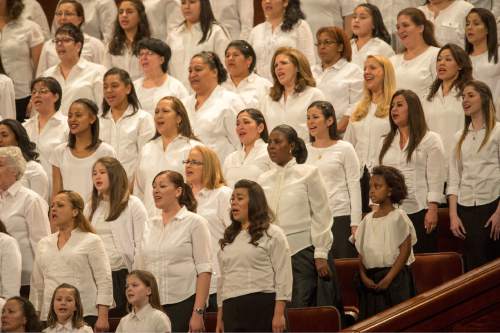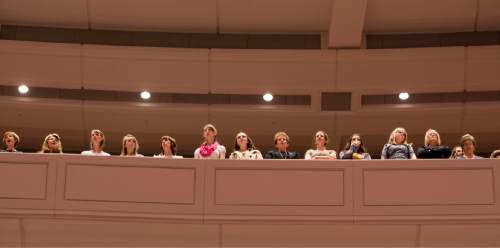This is an archived article that was published on sltrib.com in 2016, and information in the article may be outdated. It is provided only for personal research purposes and may not be reprinted.
I've had a lot of church titles in my life, none of them of any real particular importance. This has been to the mutual advantage of all concerned.
For two years, I was Elder Kirby. Given that I was barely out of puberty at the time, I never stopped believing that God appreciates irony.
During that same time I was sometimes referred to as "Flippin' Kirby" by mission leaders, as in, "Flippin' Kirby is being disobedient again."
I was President Kirby when I was an Elders Quorum boss. It probably referred to me being in charge of the ward's stevedores. What it really meant is that I had to be the first to show up whenever someone needed a piano or a gun safe moved into a basement.
Today I'm just "Brother Kirby" to the people who won't call me "Robert" instead. My official church title is "Nursery Fight Club Manager," but no one except me uses it.
Other than Catholics, I don't know much about the titles in other faiths. Titles seem to be extremely important among Mormons.
Most common among Mormons is the title "president." There are all kinds. Stake president, EQ president, Young Women president, Quorum of the Twelve president, etc.
We have so many presidents that when someone says "President" in a room filled with Mormons, all heads turn to see if it's an important one.
The ones who really miss out when it comes to titles or classifications are Mormon women. The titles applied to them don't carry the same gravitas as the titles or offices held by men.
For example, young Mormon men are referred to as deacons (12-13), teachers (14-15) and priests (16-18). There's implied authority in these classifications.
The same isn't true of young Mormon women, who are referred to collectively as Beehives (12-13), Mia Maids (14-15) and Laurels (16-17).
To give some idea of how archaic these titles are today, consider that to Mormons the "beehive" was a symbol of work and collective harmony for the early church. No real authority implied. Just work.
Note: That may have been the way it was originally intended, but I've been to LDS girls camp before and it's more akin to "Hornet Nest."
Mia Maid refers to the former name of the LDS youth program "Mutual Improvement Association." Nobody says MIA anymore except in reference to armed service personnel missing in action. And maid? Who says that now without thinking of housekeeping?
Laurel means — well, I have no idea — but the term doesn't exactly give anyone pause like the male equivalent of "priest."
How about updated names with some weight to them? Feminists, Valkyries, Amazons, Wonder Women, Priestesses, Doyennes, etc. Ooh, even better … Boudicas. Look it up.
And what about older women? Men called to be temple presidents are referred as — duh — "president." Meanwhile, his wife (frequently the smarter of the two) is the "Temple Matron."
The word may have once meant something special, but not anymore. Call a liberated woman a matron today and see what happens. I can almost guarantee you won't like it.
It's past time to find classifications and titles for Mormon women that reflect who they really are, preferably something powerful. And from this century.
In the meantime, I'll keep doing my church job in the Primary, an LDS organization that is run by a woman called President Amie B., or as I call her, Boss Amie.
Robert Kirby can be reached at rkirby@sltrib.com or facebook.com/stillnotpatbagley.





